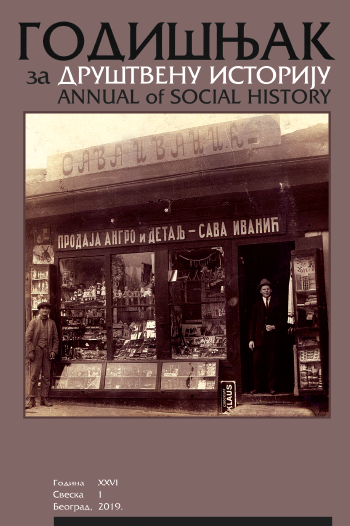If at first you don’t succeed... – Организовано исељавање Јевреја из Југославије у Израел (1948–1952) и чудновати случај Фрање Галамбоша
If at First You Don’t Succeed... – Organized Jewish Emigration from Yugoslavia To Israel (1948-1952) and the Curious Case of Franjo Galamboš
Author(s): Milan RadovanovićSubject(s): Jewish studies, WW II and following years (1940 - 1949), Post-War period (1950 - 1989), Migration Studies
Published by: Udruženje za društvenu istoriju
Keywords: Franjo Galamboš; Yugoslavia; Israel; personal history; emigration; return;
Summary/Abstract: Individuals attempted to utilize existing connections with high ranking officials of the Jewish community in Yugoslavia so as to better their own and the position of their family members within the process of mass emigration to Israel. In these situations, the basic organizational framework of the process was modified so as to fit the needs of a specific person. Consequently, each of these émigrés was leaving the country under completely unique circumstances. Analysing the personal histories of these individuals is therefore a way into better understanding the general framework of the migration process, through way of identifying what exceptions were made in a specific case. This paper focuses on the experience of Franjo Galamboš, the only participant leaving Yugoslavia within organized emigration who was deported from the newly formed Jewish state in the Middle East. After having left the country with direct assistance by the president of the Federation of Jewish religious communities, he was sent back from Haifa within days. This decision was backed by claims of Galamboš not being Jewish, not being of the appropriate age and finally not having anyone to sustain him in Israel in the case of himself not being able to do so. The return of Galamboš to Yugoslavia raised organizational questions never to be addressed within the migration process, primarily those of property and citizenship. Although this single example can not be considered representative of any such case within organized migration from Yugoslavia to Israel as a whole, it must be viewed as offering unique insight into aspects of it that would otherwise remain unnoticed and therefore very significant. Documents held at the Archives of the Jewish historical Museum in Belgrade were used in writing this paper.
Journal: Godišnjak za društvenu istoriju
- Issue Year: 2019
- Issue No: 1
- Page Range: 65-84
- Page Count: 20
- Language: Serbian

